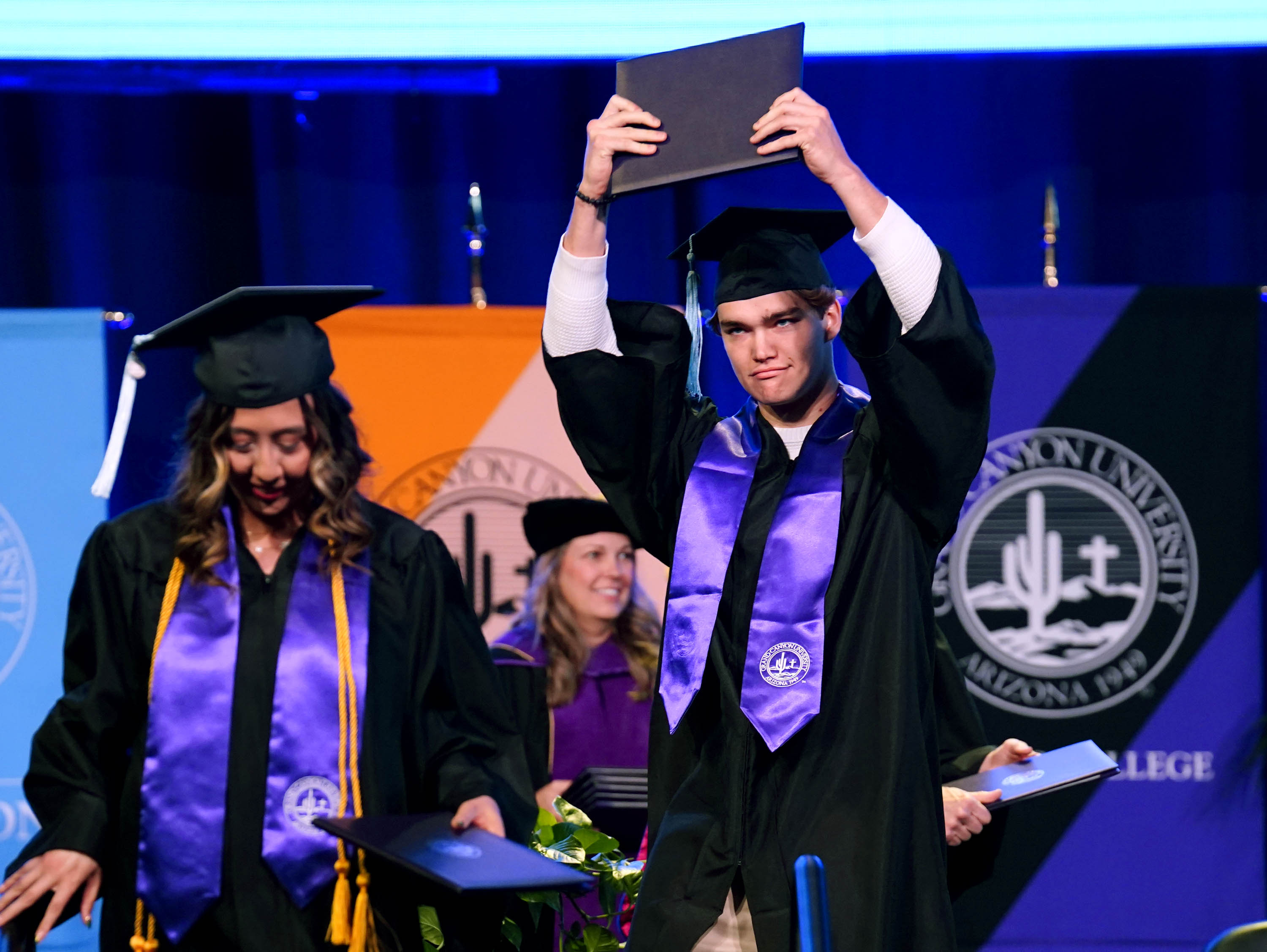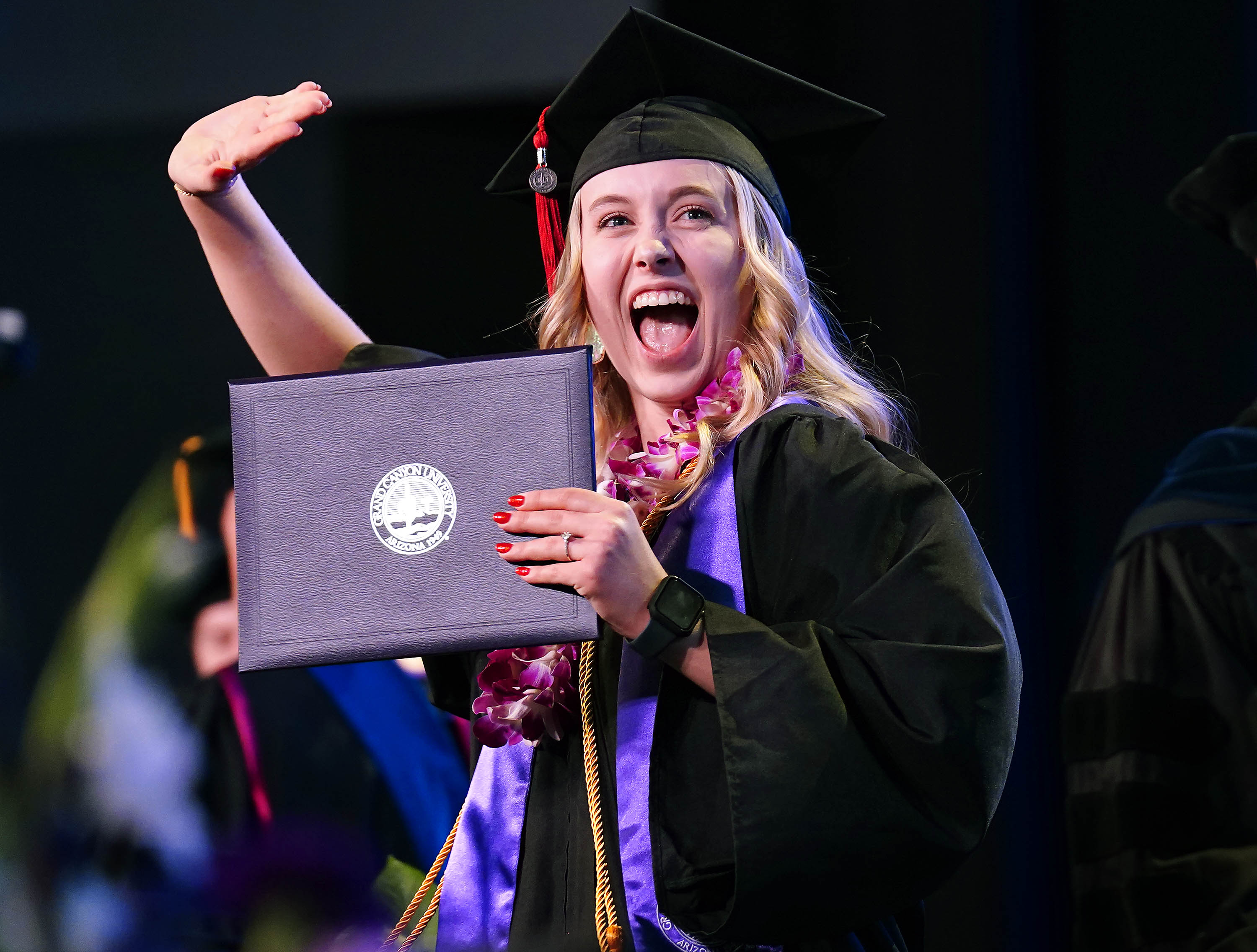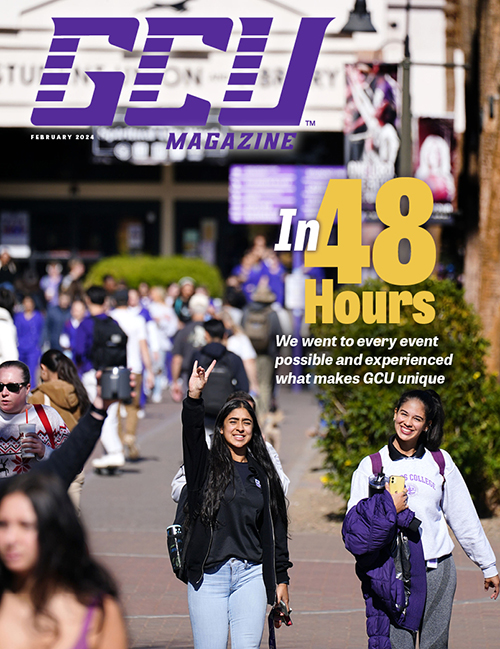By Jeannette Cruz
GCU News Bureau
Amber Loyd never aspired to be a high school mathematics teacher, let alone one who would be "flipping" education in unconventional ways.
In fact, she envisioned herself leading elementary classrooms in a more traditional setting.
That started to change when she was a student at Metro Tech High School in Phoenix when she realized how easy articulating mathematical problems and helping others came to her.
Today, the Grand Canyon University alumna has found the perfect spot to embrace her new-found passion -- back at Metro Tech as a high school mathematics teacher.
“This school is different than most schools, and it’s neat that I can promote excellence in an environment that I am most familiar with,” Loyd said while walking across campus to her classroom. “In a way, this is me giving back.”
As a freshman algebra teacher at Metro Tech, Loyd was encouraged to try a different teaching approach by using the “flipped classroom,” a pedagogical model in which the typical lecture and homework elements of a course are reversed to build her students’ learning environment and support the school’s science, technology, engineering and mathematics curriculum.
What’s more unusual is that when Loyd teaches, Shannon Harsh, a biology teacher at Metro Tech, is also in the room observing. As co-teachers, Loyd and Harsh manage a single classroom of 60 students in which they rotate between biology and algebra during an extended class period.
Overcoming challenges
Initially, getting past perceptions of learning two subjects in one class at the same time can be difficult, said Harsh, who began the program with Loyd last year.
At the early stage of the class, students complained about the disconnection between biology and algebra. Once they began to get familiar with the integration of math and science, they built the necessary awareness and increased competence about mathematics applications and solutions, she said.
Loyd agreed, adding that certain areas fit perfectly — for instance, ecology (the study of populations) with biology and exponentials with algebra.
“A lot of times we’re looking at what’s causing a decline or increase in population size over time, which, when calculated, creates an exponential curve,” she said.
The 'flipped classroom model,' a replica of that used at High Tech High in San Diego, has challenged Loyd to use the time-management and creative skills she developed during her student teaching field experience. As a student at GCU, Loyd was selected a Rodel Promising Student Teacher by the Rodel Charitable Foundation of Arizona, to embark on student teaching at Dobson High School in Mesa – an experience she calls a “major blessing.”
“The teachers that I worked with during my teaching experience taught AVID (Advancement via Individual Determination), pre-calculus and personal finance, so I was writing curriculum, helping students prepare for college, for AIMS (Activities Integrating Mathematics and Science) — I was all across the board with these different subjects," she said.
Video in the classroom
Harsh said Loyd's dedication has been key to the classroom's performance.
Loyd’s technique to teach algebra is different in that students are required to view a short video before class sessions. Class time is devoted to exercises, projects or discussions.
With the help of the flipped-model technology, students can engage in the material multiple times, Loyd said.
Still, the video content is not what makes the flipped model effective. Rather, it's having the students work in the classroom.
While a lot of math teachers like the idea of the flipped classroom, they are not sure how to implement it because many hours go into setting up the video content.
Her steps? First, she creates a rough sketch of what she wants annotated in the video. Then, using an interactive whiteboard design tool called Explain Everything, she makes a base of problems and steps, adds an introductory video and uses a writing tool to solve the problems. Finally, she exports the final video to a YouTube channel. Students then can access the video through a learning-management system.
In a classroom of five dozen students where each has different learning needs, the model makes the process of getting to know students as learners far easier, Loyd said.
“When I taught in the traditional classroom setting, I found that the higher performing students often got bored when I would have to repeat instructions for others who were left behind during lecture,” Loyd said. “After a lecture you then go home with an assignment, but the problem with that is that you don’t often get time to work on that assignment in class so you don’t know if you’re making mistakes and you don’t have anyone you can ask if you have questions.”
If you ask Loyd how learning happens best, she will tell you it's when the flipped classroom method is used.
“Now that I’ve done this, I wouldn’t go back to my old way of teaching,” Loyd said. “I have such a passion for this program. Although it sounds a bit crazy, 60 students just doesn’t scare me anymore.”
Contact Jeannette Cruz at (602) 639-6631 or [email protected].




